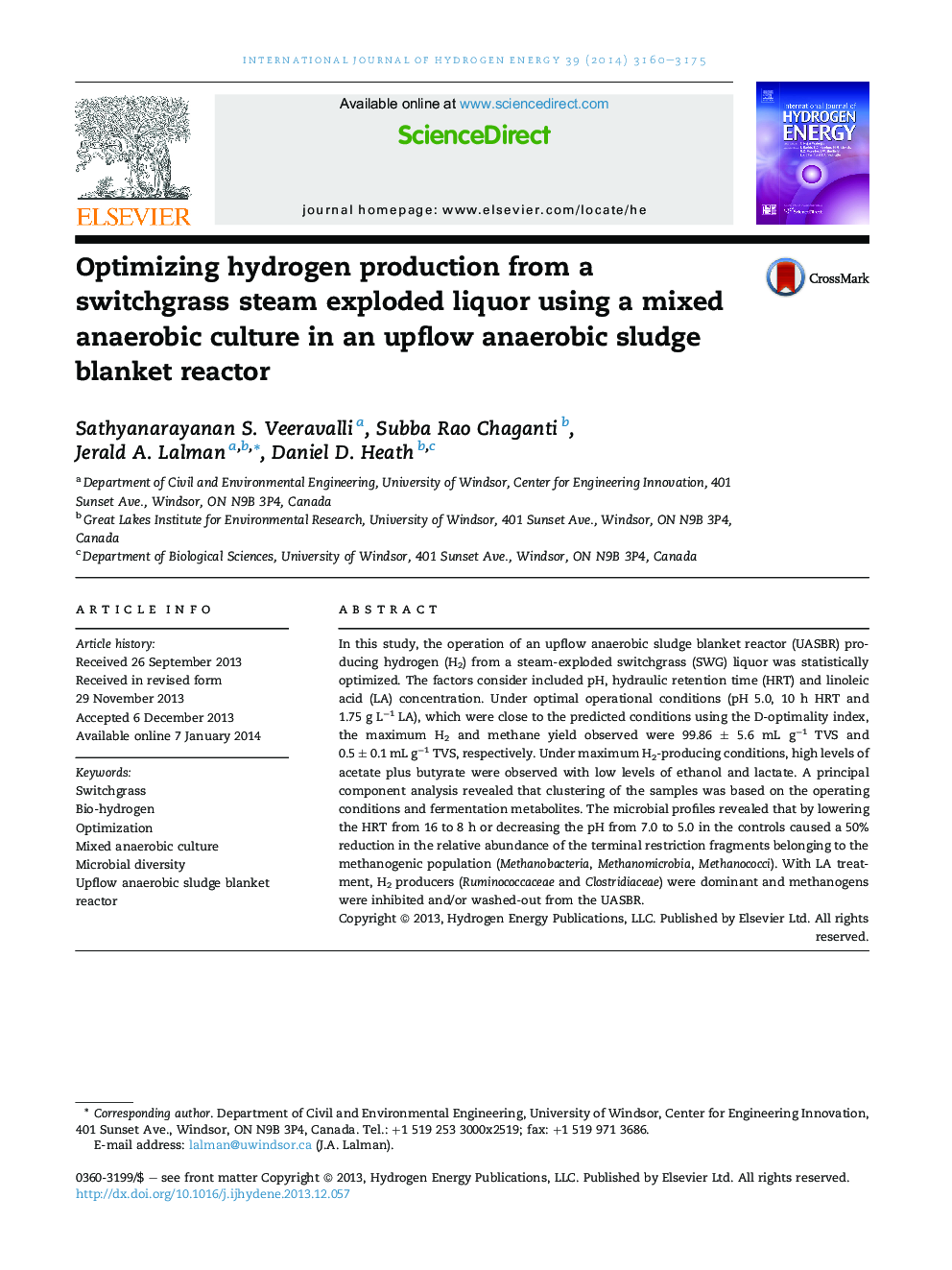| Article ID | Journal | Published Year | Pages | File Type |
|---|---|---|---|---|
| 1270621 | International Journal of Hydrogen Energy | 2014 | 16 Pages |
•Hydrogen production from switchgrass hydrolysate was demonstrated in UASBRs.•RSM optimization of pH, HRT and LA concentration for maximum H2 production.•Methane detected in controls containing Methanobacteria and Methanomicrobia.•Acetate, butyrate, and ethanol were major byproducts of switchgrass fermentation.•Ruminococcaceae and Clostridiaceae were dominant in H2-producing cultures.
In this study, the operation of an upflow anaerobic sludge blanket reactor (UASBR) producing hydrogen (H2) from a steam-exploded switchgrass (SWG) liquor was statistically optimized. The factors consider included pH, hydraulic retention time (HRT) and linoleic acid (LA) concentration. Under optimal operational conditions (pH 5.0, 10 h HRT and 1.75 g L−1 LA), which were close to the predicted conditions using the D-optimality index, the maximum H2 and methane yield observed were 99.86 ± 5.6 mL g−1 TVS and 0.5 ± 0.1 mL g−1 TVS, respectively. Under maximum H2-producing conditions, high levels of acetate plus butyrate were observed with low levels of ethanol and lactate. A principal component analysis revealed that clustering of the samples was based on the operating conditions and fermentation metabolites. The microbial profiles revealed that by lowering the HRT from 16 to 8 h or decreasing the pH from 7.0 to 5.0 in the controls caused a 50% reduction in the relative abundance of the terminal restriction fragments belonging to the methanogenic population (Methanobacteria, Methanomicrobia, Methanococci). With LA treatment, H2 producers (Ruminococcaceae and Clostridiaceae) were dominant and methanogens were inhibited and/or washed-out from the UASBR.
Graphical abstractFigure optionsDownload full-size imageDownload as PowerPoint slide
